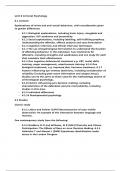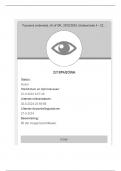Summary
Summary Unit 6: Criminal psychology
- Institution
- PEARSON (PEARSON)
- Unit 6: Criminal psychology - Summary notes 30 pages - Includes all topics from Edexcel specification (content, methods, studies, key questions, practical) - Includes exam-style answers as well as detailed A01 and A03.
[Show more]












